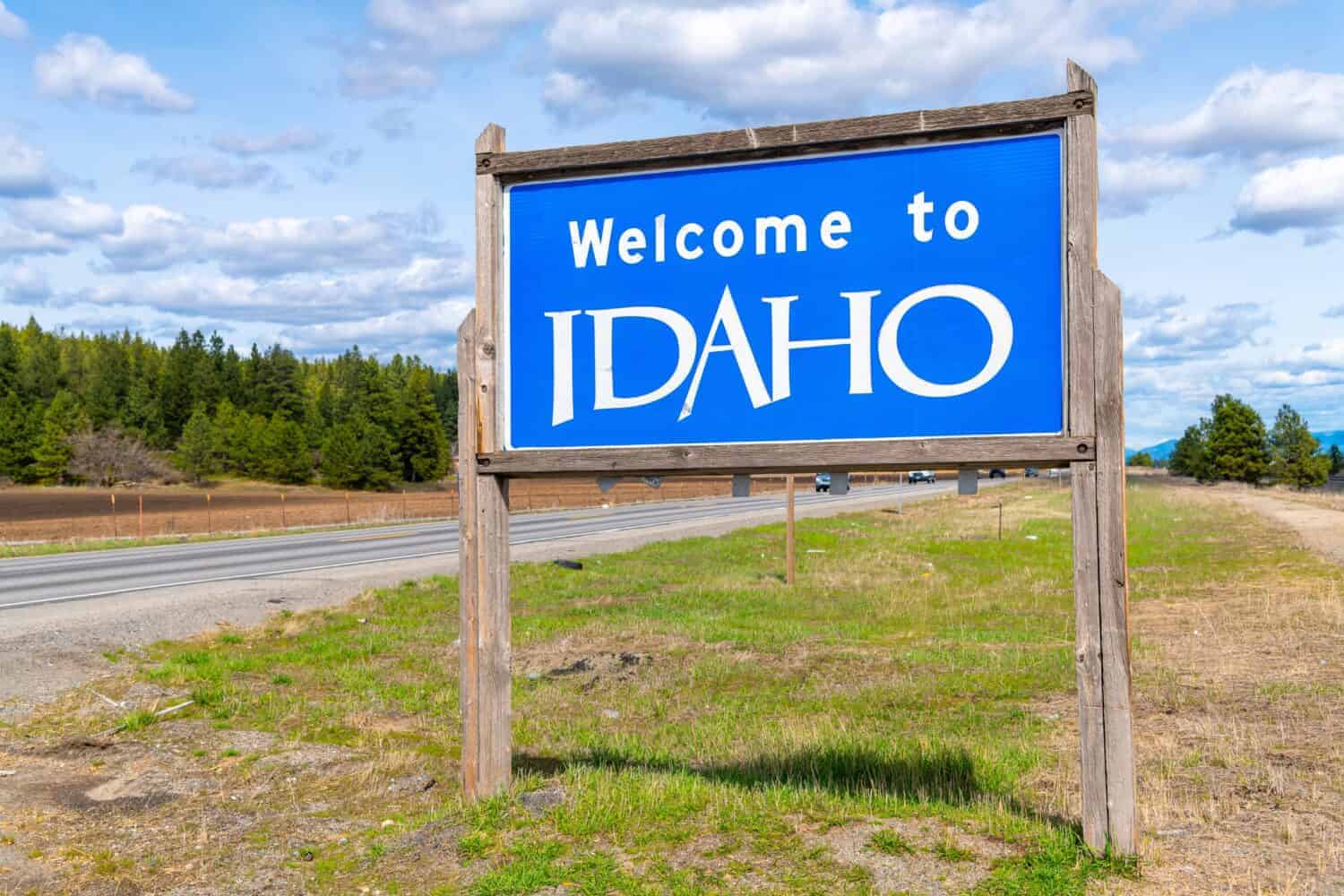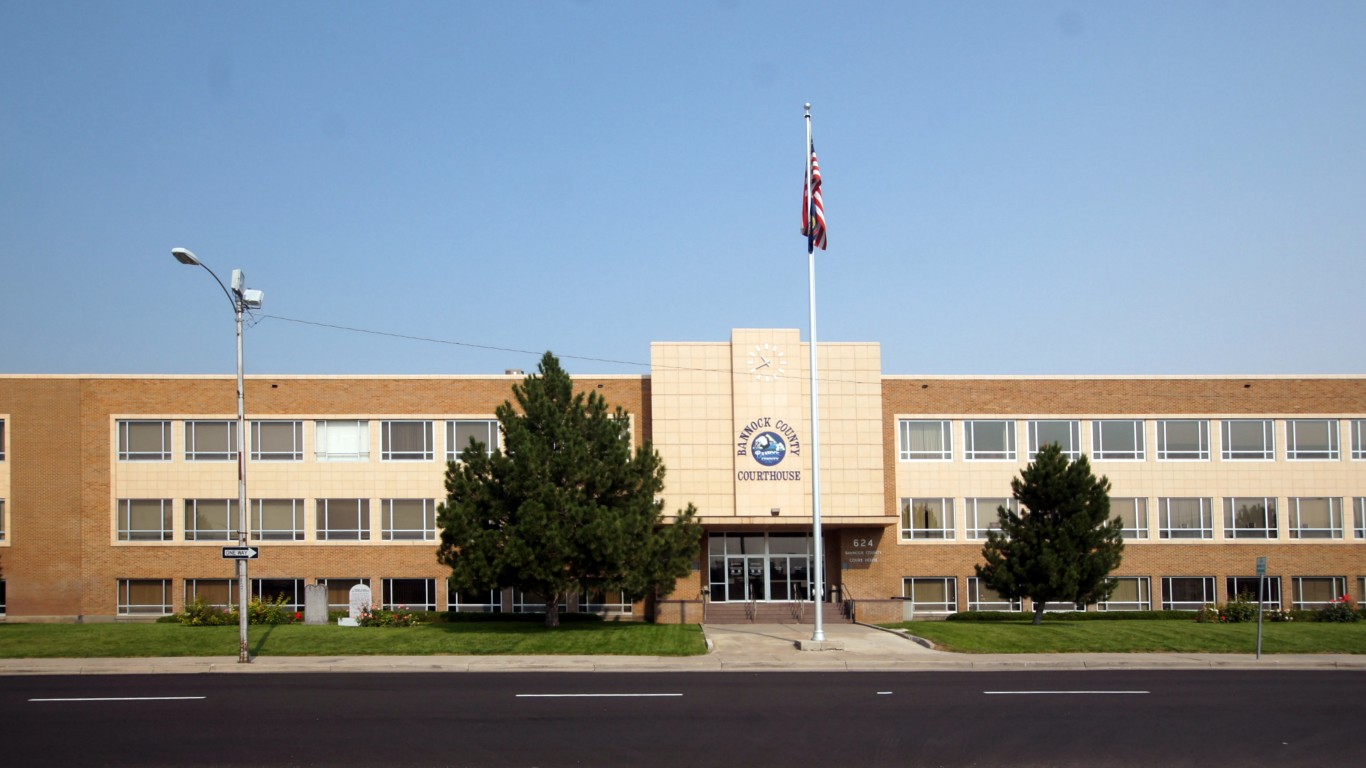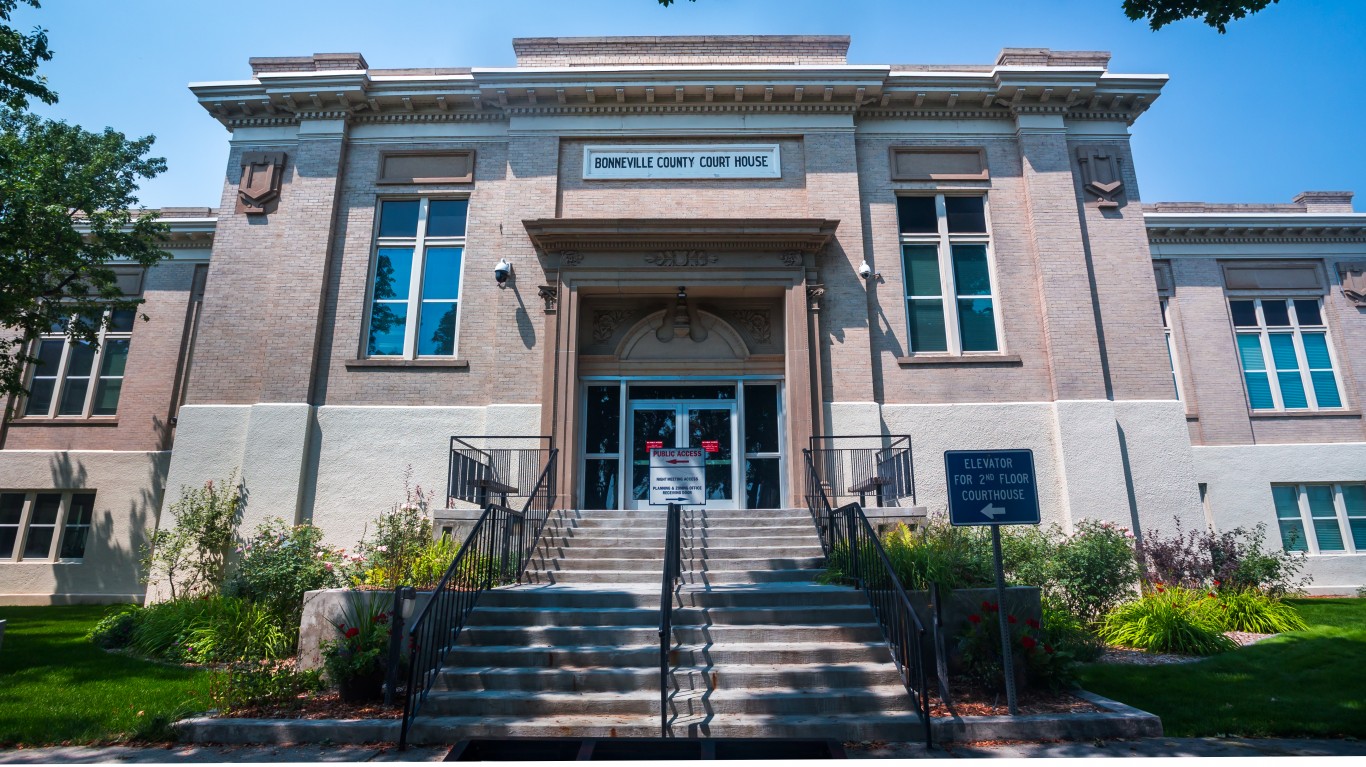
24/7 Wall St. Insights
- Nationwide, the cost of living tends to be higher in cities than in places outside of major metro areas
- Still, consumer prices can vary considerably from one city to another, and some Idaho metro areas are more affordable for a broader range of incomes than others
- Also: 2 Dividend Legends To Hold Forever
The cost of living has skyrocketed across the United States in recent years — and rising prices are weighing heavily on the minds and pocketbooks of American families. According to a recent survey conducted by the U.S. Census Bureau, more than 57% of American households have had at least some difficulty affording their usual expenses in the last week, and over 93% of American adults reported stress related to higher prices in the last two months.
The rate of inflation began to surge in early 2021, and ultimately peaked in June 2022, when the price of goods and services were 9.1% higher than they were 12 months earlier, according to the Consumer Price Index. While inflation has cooled in the last two years, the CPI remains above the Federal Reserve’s target rate of 2%.
While no one was spared from rising consumer prices, in relative terms, the overall cost of living varies considerably across the country. In Idaho, for example, goods and services were about 8.2% less expensive, on average, than they were nationwide in 2022 — the latest year of available data. Despite a lower cost of living, 58.3% of Idaho households had difficulty paying for household expenses in the last week, and 94.6% of adults in the state reported stress resulting from rising prices. (Here is a look at the most expensive states to live in.)
Generally, Americans living in major cities are saddled with a higher cost of living than those in smaller, rural communities. According to the Bureau of Economic Analysis, goods and services are about 11.4% more expensive within U.S. metro areas than they are outside of metro areas.
In keeping with this pattern, goods and services are only about 7.1% less expensive than average across all six Idaho metro areas, and 11.3% less expensive in non-metro areas. Still, the overall cost of living can vary meaningfully between one Idaho city and another. In the state’s least expensive metro area, consumer prices are about 14.8% lower than they are nationwide on average. Meanwhile, in the state’s most expensive city, prices are only about 5.8% lower than average. (Here is a look at the most affordable town in every state.)
Consumer prices tend to rise when demand for goods and services outpaces supply. Because cost of living is closely tied to consumer spending, it is no coincidence that more affluent areas are typically more expensive places to live than lower income communities. Not surprisingly, the median household income in some of the most expensive cities on this list is higher than the comparable statewide median income of $72,785.
This is the cost of living in every Idaho metro area, ranked.
Why It Matters

Inflation, as measured by the Consumer Price Index, hit a multi-decade high in 2022, and as of July 2024, the CPI remains well above the Federal Reserve’s 2% target. Even though prices tend to be far higher in cities than in rural communities, the vast majority of Americans — 80% according to the U.S. Census Bureau — live in an urban area. Still, consumer prices can vary considerably from one city to another, and some Idaho metro areas are more affordable for a broader range of incomes than others.
6. Lewiston, ID-WA

- Overall cost of living, 2022: 14.8% lower than U.S. average
- Median household income, 2022: $66,844 ($5,941 less than statewide median)
- Median home value, 2022: $337,000 ($95,500 less than statewide median)
- Metro area population: 65,512
5. Pocatello, ID

- Overall cost of living, 2022: 12.6% lower than U.S. average
- Median household income, 2022: $61,566 ($11,219 less than statewide median)
- Median home value, 2022: $311,200 ($121,300 less than statewide median)
- Metro area population: 98,560
4. Twin Falls, ID

- Overall cost of living, 2022: 9.1% lower than U.S. average
- Median household income, 2022: $62,921 ($9,864 less than statewide median)
- Median home value, 2022: $329,700 ($102,800 less than statewide median)
- Metro area population: 118,638
3. Idaho Falls, ID

- Overall cost of living, 2022: 9.1% lower than U.S. average
- Median household income, 2022: $74,511 ($1,726 more than statewide median)
- Median home value, 2022: $369,600 ($62,900 less than statewide median)
- Metro area population: 165,409
2. Coeur d’Alene, ID

- Overall cost of living, 2022: 6.3% lower than U.S. average
- Median household income, 2022: $75,328 ($2,543 more than statewide median)
- Median home value, 2022: $547,800 ($115,300 more than statewide median)
- Metro area population: 183,578
1. Boise City, ID

- Overall cost of living, 2022: 5.8% lower than U.S. average
- Median household income, 2022: $80,928 ($8,143 more than statewide median)
- Median home value, 2022: $486,500 ($54,000 more than statewide median)
- Metro area population: 813,801
Want to Retire Early? Start Here (Sponsor)
Want retirement to come a few years earlier than you’d planned? Or are you ready to retire now, but want an extra set of eyes on your finances?
Now you can speak with up to 3 financial experts in your area for FREE. By simply clicking here you can begin to match with financial professionals who can help you build your plan to retire early. And the best part? The first conversation with them is free.
Click here to match with up to 3 financial pros who would be excited to help you make financial decisions.
Have questions about retirement or personal finance? Email us at [email protected]!
By emailing your questions to 24/7 Wall St., you agree to have them published anonymously on a673b.bigscoots-temp.com.
By submitting your story, you understand and agree that we may use your story, or versions of it, in all media and platforms, including via third parties.
Thank you for reading! Have some feedback for us?
Contact the 24/7 Wall St. editorial team.

